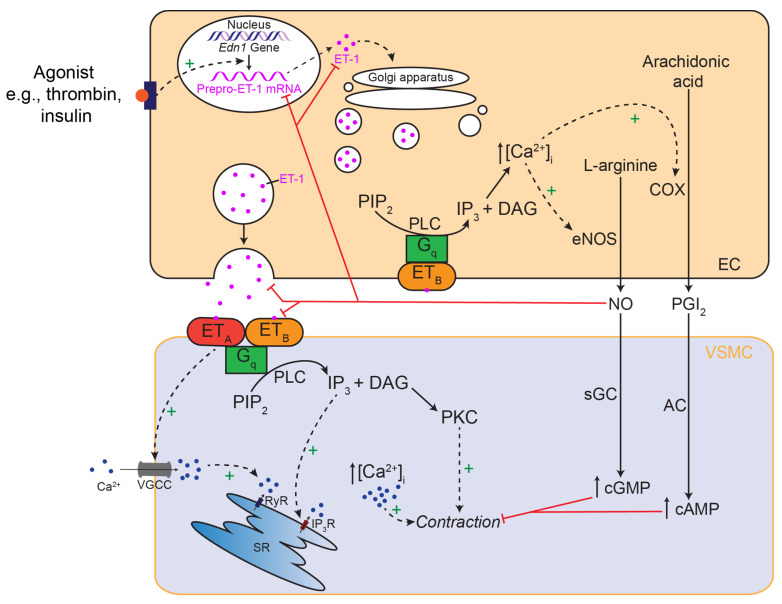Figure 1.
Simplified schematic diagram of ET-1 signalling in the vasculature to cause vasoconstriction. ET-1 is stimulated to be synthesised and/or released by the appropriate agonist from endothelial cells (ECs). ET-1 can then act via ETA and ETB receptors on the vascular smooth muscle cells (VSMCs). These receptors are Gq-coupled which results in the hydrolysis of phosphatidylinositol biphosphate (PIP2) by phospholipase C (PLC) to inositol 1,4,5-triphosphate (IP3) and diacylglycerol (DAG). VSMC contraction is stimulated by the activation of protein kinase C (PKC) and an increase in [Ca2+]i via inositol 1,4,5-triphosphate (IP3) acting on the sarcoplasmic reticulum (SR), activation of voltage gated calcium channels (VGCC) and calcium-induced calcium release via ryanodine receptors (RyR). ET-1 can also act on ETB receptors on ECs, also via an increase in [Ca2+]I, to stimulate the release of vasodilators such as nitric oxide (NO) and prostaglandin I2 (PGI2) via endothelial nitric oxide synthase (eNOS) and cyclooxygenase (COX), respectively. NO and PGI2 can then diffuse into VSMCs to increase levels of cyclic GMP (cGMP) and cyclic AMP (cAMP) via soluble guanylyl cyclase (sGC) and adenylyl cyclase (AC), respectively, to inhibit contraction. NO may also have direct inhibitory effects on ET-1 via inhibition of transcription synthesis, release or ET-1-receptor interactions.

